AS COMPANIES START THE PROCESS OF ENTICING EMPLOYEES BACK TO THE OFFICE, MEETING THE CRITERIA OF THE UPCOMING WELL PERFORMANCE RATING MIGHT BE A GOOD PLACE TO START.
ANNA HAYES FOUND OUT MORE ABOUT THE LATEST WELLNESS DEVELOPMENTS.
A day of reckoning is coming (if it hasn’t already) for many office blocks not just in Australia but around the world.
Although it’s been a slow return to whatever our ‘new normal’ looks like, it is happening and thoughts will eventually turn to the idea of repopulating our many office blocks with workers – some of whom have become quite comfortable at home, thank you very much.
It will be an interesting debate with pros and cons on both sides but one thing is for sure, with everything that has happened in the past 18 months, people are and will continue to expect more from the buildings that house them – both at home and in work.
To that end, the International WELL Building Institute (IWBI) has recently announced the WELL Performance Rating, a new designation rewarding building owners and operators for using performance metrics to gain insights into the health and wellbeing of the people inside and enhance conditions in their spaces based on those insights.
In order to do that, the IWBI invited a number of companies to form a consortium that would play a role in finalising the recommendations and considerations of the upcoming rating.
BEST PRACTICE BECOMES STANDARD
Australia-based Jack Noonan is the vice president of Asia Pacific for the IWBI, leading operations for the group in this region. With a background in science, he is passionate about the idea of healthy buildings, a space the IWBI has been working in for the past 12 years.
The WELL Performance Rating, he says, focuses on the performance of our buildings based on several criteria such as air quality, water quality, heat and light, acoustics, and more. He likens it to the debate about energy usage in buildings in terms of market acceptance, pointing out that that is a relatively recent development.
“If you’d asked someone 20 years ago, what’s the energy performance of their building, a lot of people wouldn’t know. But we’ve made so many advances in relation to energy efficiency and understanding energy within our buildings. That wasn’t the case 20 years ago, but now it’s standard practice.”
SICK BUILDING SYNDROME
The idea of our physical spaces being bad or, at the very least, not good, for our health is not a new idea, Jack points out, saying that it is often seen as the number one determinant of our health, even more than access to medical care or genetics.
“Since the 1980s there’s been this term in the market called the ‘Sick Building Syndrome’ and that is the idea that our buildings can make us sick. In the 1980s, in some of the poor performing buildings, you had workers in their offices who would get runny noses, itchy eyes, headaches, fatigue, etc. And there was this idea that the buildings were actually making people sick.”
He says that the IWBI is trying to flip that narrative, acknowledging that if physical spaces are the number one determiner of your health, and people are spending long periods in those spaces, it’s not simply ok for a building to prevent you from getting sick – they have to improve your health and wellbeing.
“We were kind of on this trend before the pandemic but that has really shone a light on the fact that certain interventions that enhance people’s health and wellbeing are more critical than they ever have been.”
This is, of course, a key contributor to sustainability outcomes but he points out that buildings don’t really understand performance in terms of the human experience or their health and wellbeing.
That’s what the WELL Performance Rating is intended to address: “We’re trying to get to a world in which understanding the performance of our spaces as they relate to human health and wellbeing is no longer seen as best practice, it really needs to be seen as standard practice.”
To that end, Jack stresses that being able to measure the various components of these spaces is key.
“You can’t manage what you don’t measure. You can’t be in a high-performing space and not know the air quality or the water quality of that space. This is really about creating that culture of measurement and culture of high performance within our buildings.”
COMPETING WITH THE KITCHEN BENCH
Amongst the IWBI consortium heavy hitters like Honeywell, Schneider International, Johnson Controls, and Trane Technology, is Australian proptech scaleup Cognian Technologies which provides connectivity for all buildings to enable smart technology.
Mark Blum is chief executive and co-founder of the company and he says that they already have massive insight into where the commercial property industry is performing well when it comes to health and wellness and where more
focus is needed. While health and wellness are ‘all day, every day’ concerns, this new rating is particularly pushing the focus onto commercial buildings which have, in many jurisdictions, lain empty for months. Mark says: “Discussion factors such as
navigating the post-pandemic return to offices are already huge, with other areas of discussion including adaptability of the built environment to human needs becoming more prominent.” It’s a discussion point that can’t be ignored as you consider how many places have adapted to the idea of the distributed workforce. Will the last 18 months encourage building owners to do everything to make spaces safe for returning workers, or will the uncertainty around their return stagnate any such development?
Jack acknowledges that all of these spaces are, in addition to competing with each other, now competing with the kitchen bench as well, meaning that a lot of thought has to be put into how to provide an exceptional human experience within workspaces.
“Up until the pandemic, this was driven by organisations focusing on people, but also on each other. One of the reasons we’ve got such strong uptake of programs here in Australia is because we’ve got a really competitive property industry. So, when one of the big property owners does something, the others tend to follow,” Jack says.
He acknowledges that it’s a matter of restoring confidence as well because if you are going to ask people to travel an hour each way to get to work you need to be providing an experience they cannot get at home.
To Jack’s delight, that comes down to the science behind the ratings.
“It’s about providing that transparency and that validation that this building has gone through various checks or a process that has been independently verified, and is recognised as a healthy space.”
Mark agrees, suggesting that health and wellness, much like energy and safety ratings will become table stakes with boards and investors expecting health and wellness reporting the same vein as they do for sustainability.
“The industry has moved on from the 1980s idea of ‘Sick Building Syndrome’ to the idea that today’s buildings should actually enhance your health and wellbeing.”
“Health and wellness at work, in transit, and at home is now more front of – mind than ever before. This creates huge opportunities for the commercial property market to reach new levels of health and wellness benchmarking, which has a strong impact on tenant satisfaction, occupant comfort, health and productivity.”
GETTING BUILDINGS CONNECTED
In terms of contributions to the IWBI consortium, Cognian’s main strength is in the area of connectivity which is fitting because you can’t do smart anything without it.
Syncromesh is a wireless canopy that enables old and new buildings, big and small, to become smart buildings.
Mark explains: “Syncromesh dispenses with the old approach of siloed systems and fixed costs. In creating one standard and open smart building connectivity platform, it securely enables sensors, smart devices, beacons, lighting, temperature control and a myriad of other features across a huge range of vendors to interoperate.”
Syncromesh, he says, provides the ability to scale smart home technologies and automation into the commercial space.
“It allows a range of sensors to be connected wireless using open standards (like Bluetooth) to building reporting and management systems so that the environment can be optimised for not only wellness but also sustainability and building efficiency.”
Cognian has been working closely with Delos, the founder of the IWBI, for some time and the two companies’ missions are similar in terms of enabling all buildings to be sustainable and human-centric.
“You could say that WELL is in our DNA and we are proud to be an IWBI member,” Mark remarks.
He adds that collaborating on the new rating is part of the company mission to ensure buildings globally are connected and delivering positive outcomes.
Jack adds: “In terms of the impact on human health and wellbeing, we’re not measuring the performance of our buildings and we need to. We need to get to the point where it’s not just best practice for the really shiny buildings, it needs to get to the point where it’s standard practice for all buildings.”
This article is from Connected magazine, Issue #4 2021 and is reproduced with permission.






